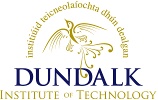McGinnity, Philip and Jennings, Eleanor and de Eyto, Elvira and Allott, Norman and Samuelson, Patrick and Rogan, Gerard and Whelan, Ken and Cross, Tom (2009) Impact of naturally spawning captive-bred Atlantic salmon on wild populations: depressed recruitment and increased risk of climate-mediated extinction. Proceedings of the Royal Society B (276). pp. 3601-3610. ISSN 3601–3610
Preview |
PDF
Download (588kB) | Preview |
Abstract
The assessment report of the 4th International Panel on Climate Change confirms that global warming is strongly affecting biological systems and that 20–30% of species risk extinction from projected future increases in temperature. It is essential that any measures taken to conserve individual species and their constituent populations against climate-mediated declines are appropriate. The release of captive bred animals to augment wild populations is a widespread management strategy for many species but has proven controversial. Using a regression model based on a 37-year study of wild and sea ranched Atlantic salmon (Salmo salar) spawning together in the wild, we show that the escape of captive bred animals into the wild can substantially depress recruitment and more specifically disrupt the capacity of natural populations to adapt to higher winter water temperatures associated with climate variability. We speculate the mechanisms underlying this seasonal response and suggest that an explanation based on bio-energetic processes with physiological responses synchronized by photoperiod is plausible. Furthermore, we predict, by running the model forward using projected future climate scenarios, that these cultured fish substantially increase the risk of extinction for the studied population within 20 generations. In contrast, we show that positive outcomes to climate change are possible if captive bred animals are prevented from breeding in the wild. Rather than imposing an additional genetic load on wild populations by releasing maladapted captive bred animals, we propose that conservation efforts should focus on optimizing conditions for adaptation to occur by reducing exploitation and protecting critical habitats. Our findings are likely to hold true for most poikilothermic species where captive breeding programmes are used in population management.
| Item Type: | Article |
|---|---|
| Uncontrolled Keywords: | Captive breeding; Atlantic salmon; Climate change; Bioenergetics |
| Subjects: | Science > Biology Science |
| Research Centres: | Centre for Freshwater and Environmental Studies |
| Depositing User: | Concepta Woods |
| Date Deposited: | 14 Nov 2011 10:12 |
| Last Modified: | 11 Nov 2014 16:10 |
| URI: | https://eprints.dkit.ie/id/eprint/55 |
Actions (login required)
 |
View Item |
Downloads
Downloads per month over past year

